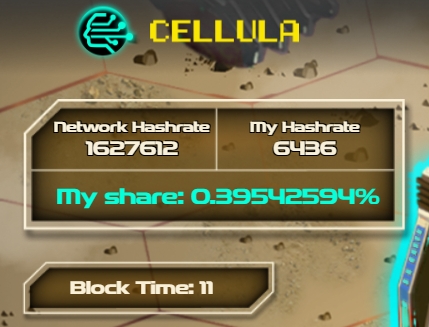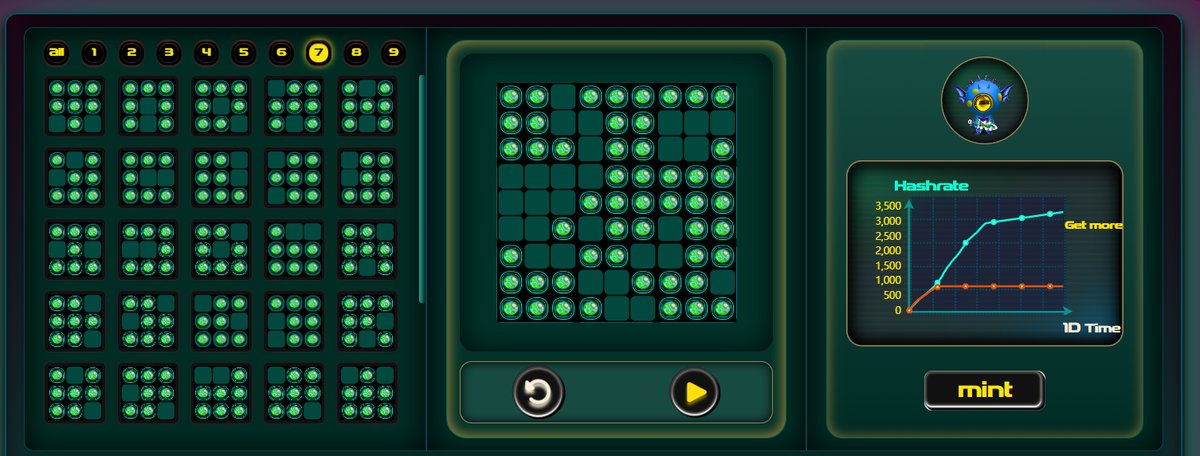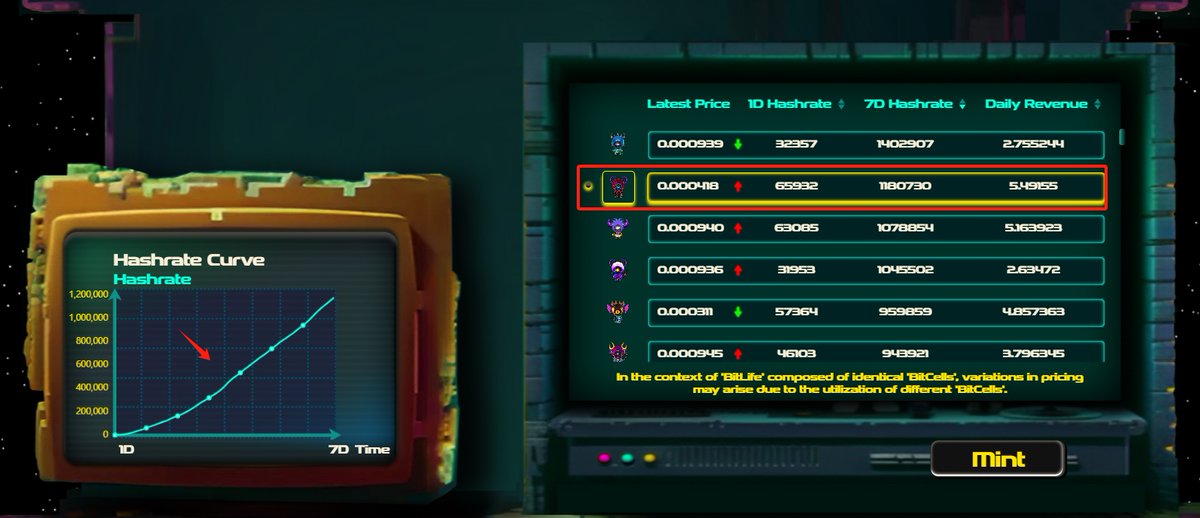Report on the Initial Experience of the Full-Chain Game Cellula 🧙♂️
At the invitation of a friend, I stayed up late testing the full-chain game Cellula @cellulalifegame from yesterday until 3 am this morning, and now I will candidly share my real testing experience.
1⃣ Background of the Full-Chain Game
The full-chain game/self-world track is one of the highest-grade sectors in the current primary market of the cryptocurrency industry.
The full-chain game is a special existence with instances before primitives. There is still no consensus on "what is a full-chain game" in the market. Among the many definitions of the full-chain game/self-world, the most influential ones come from two sources: one is the "Self-World Manifesto" from the Lattice team of the full-chain game starship project, and the other is from the crypto VC Paradigm, which is good at inventing new primitives.
Definition of the Full-Chain Game by Lattice in the "Self-World Manifesto"
The Lattice team proposed a concept called "digital physics" in the "Self-World Manifesto," advocating the simulation of general physical laws and relativistic phenomena by adding physical properties such as spatial coordinates, speed of light, and energy conservation to basic smart contracts and architectures.
The Lattice team attempted to use the ECS (Entity-Component-System) framework of the game engine, combined with the perpetual existence of on-chain state information and assets, to build a sub-world of the so-called real world we live in - the self-world.
Paradigm's Definition of the Full-Chain Game
In Paradigm's view, the world state and logic of the full-chain game are all on-chain and perpetually existent. The entities-components-systems of the full-chain game can be added, modified, deleted, and combined by players according to rules. The token economics of the full-chain game should be designed with openness, transparency, and inclusiveness as principles, and the governance of the full-chain game should belong to DAO and the community.
The definitions of the full-chain game by Lattice and Paradigm each have their own merits. Lattice's definition mainly comes from the perspective of the underlying architecture, while Paradigm's definition mainly comes from the business layer's perspective.
The Genesis project of the full-chain game @darkforest_eth is a sci-fi RTS star wars game based on the Gnosis chain, combining ZK zero-knowledge proof technology and minimalist pixel style. Heavy enthusiasts of this game include crypto leaders, industry OGs, VC partners, and others, including Vitalik.
After DarkForest ceased development and operation, the core team established @latticexyz. Currently, their ongoing projects include the self-world engine MUD, the full-chain game-specific Plasma L2 @redstonexyz, and the casual RTS full-chain game @skystrifeHQ. The non-core team established @ArgusLabs_, which launched a full-chain game @DarkFrontierGG that replicates DarkForest. The entry barriers for these two projects are very high, and non-core members of the full-chain game community, including crypto VCs and investors, are all excluded.
The relatively approachable projects in the full-chain game track are mainly the Starknet ecosystem's @LootRealms, @influenceth, @TheDopeWars, and others. Starknet regards the full-chain game as an important strategic direction for its ecosystem, perhaps because the high-grade nature of the full-chain game is most compatible with Starknet's love for showing off. Just kidding! Starknet's bet on the full-chain game is mainly because the full-chain game can maximize the advantages of its zk technology, Cairo VM, and Cairo programming language.
Currently, the landscape of the full-chain game track is as follows: the entry barriers for high-quality projects at the top are extremely high and difficult to participate in, while the long-tail market is dominated by the Starknet ecosystem.
2⃣ Background of Cellula
The products currently being tested in the full-chain game, including Cellula, belong to 4399-like casual games. This situation cannot be changed for the time being, as the industry is waiting for the mature version of the MUD game development engine to go online.
However, crypto VCs and institutional investors are well aware that the full-chain game will be one of the next super alphas. From the perspective of anti-fragile portfolio allocation leveraging strategy, almost all crypto VCs want to include a full-chain game project in their investment portfolio, and Binance Labs is no exception.
Cellula is a full-chain artificial life simulation game. Cellula is the winning project of the 6th season of the Binance Labs Incubation Program and successfully received an investment offer from Binance Labs, becoming the only full-chain game invested by Binance Labs.
The world view setting of the Cellula game draws inspiration from Conway's Game of Life cellular automaton algorithm and the evolutionary mechanism of the classic game "Spore."
Players can choose 9 out of 511 cells to create an artificial life Bitlife. Each Bitlife has a unique hash rate curve, with some being strong in the early stage and weak in the later stage, some being weak in the early stage and strong in the later stage, and some being balanced.
Players need to feed and activate Bitlife with BNB, and they can then mine energy points for the players. Energy points can be used to exchange for Cellula's future tokens.
Cellula's mining mechanism, vPoW, pays tribute to Bitcoin's PoW mining mechanism, generating a virtual block every 5 minutes, with each virtual block rewarding 10,000 energy points, distributed proportionally according to the computational power of the entire game world.
3⃣ Testing Experience of Cellula
Currently, Cellula is in the closed testing phase, and the game is running on the BNB testnet. Due to the accumulated energy points during the testing phase, they can be exchanged for test coins in the future, and the cost of BNB on the testnet is almost zero. Therefore, the goal of players participating in the testnet is to increase their computational power at minimal cost to maximize energy points.
The energy points obtained by players = Computational power of Bitlife1 * quantity + Computational power of Bitlife2 * quantity + Computational power of Bitlife3 * quantity + …
The key to winning this game is how to match the computational power and quantity of Bitlife to ensure the maximum proportion of computational power every day within 7 days.
One trick is to directly purchase Bitlife in the top ranks of the in-game store. The price of Bitlife is controlled by a VRGDA Dutch auction curve, and if there is no purchase for a period of time, the price will automatically decrease.
Due to Cellula's vPoW mining mechanism, which is a dynamic and repeated game process without a mining pool mechanism, the strict dominant strategy for players on the testnet is to choose the strongest computational power on the first day. However, I am concerned that if player behavior shows consistency, it may lead to a Nash equilibrium point where both sides lose.
So, faced with this uncertainty, I chose a balanced approach, purchasing Bitlife with the strongest computational power for 7 days and the strongest computational power for 1 day in a 6:4 ratio. Currently, my computational power is 6436, ranking 27th.
CellulaAlphaTesting



免责声明:本文章仅代表作者个人观点,不代表本平台的立场和观点。本文章仅供信息分享,不构成对任何人的任何投资建议。用户与作者之间的任何争议,与本平台无关。如网页中刊载的文章或图片涉及侵权,请提供相关的权利证明和身份证明发送邮件到support@aicoin.com,本平台相关工作人员将会进行核查。




